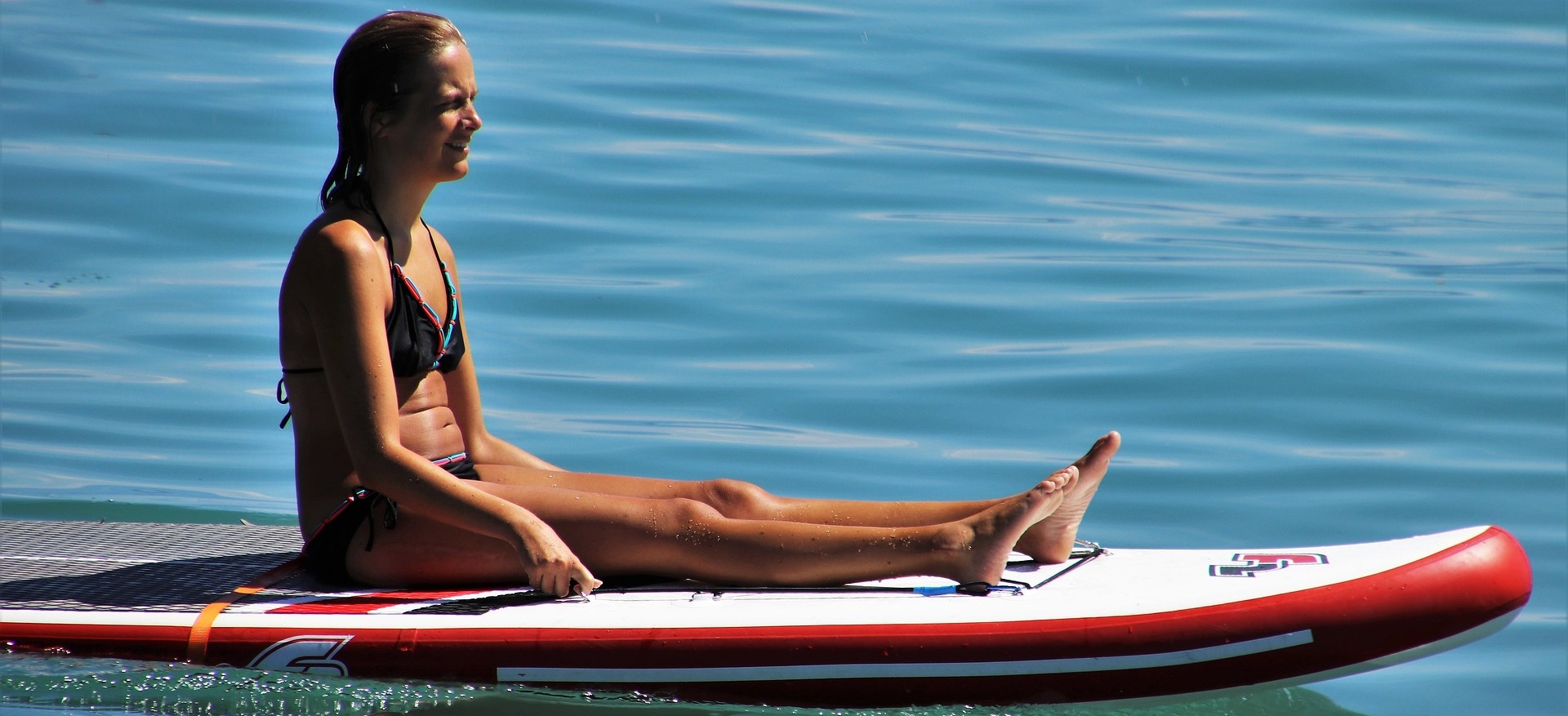Before we teach you how to ride a board correctly, I would like to first state the basic rules for using a glanders board in water:
- Safety is above all. If this is your first time getting up on glanders, be sure to fasten the leash and put on a life jacket. Especially if you plan to conquer the sea coast.
- Check the weather forecast and watch the wind speed. In very windy weather, it will be very difficult to resist on the glanders, and if the glanders begins to carry away far from the coast, will you have enough strength to rake back?
- Before riding on the river, check all its currents, in which direction, whether there are ebb and flow. In general, take an interest in the life of the river you want to enter.
- Carefully choose the places where it will be safest to ride the sup. Usually, these are lakes, bays, bays, places with little or no current.
- Always take sunscreen, hat, water with you for a walk. If you are going to ride in autumn or spring, then hot tea or coffee, as well as a changeable set of dry, warm clothes.
- It is not recommended to ride glanders in busy places. You can hit a person with a paddle, which will probably not be very pleasant. One of you, at least!
Correct Position On The Board
The rider’s stance is quite simple – feet shoulder-width apart, knees slightly bent, body straight. This allows you to maintain balance, and in the event of a fall, you would rather sit on your knees. This stance is recommended for all beginners so that the body gets used to new movements and, in general, the environment. In the future, your legs will straighten by themselves, and you may even be able to move around the stand-up board without losing your balance.
Standing SUP Technique
Rowing while standing on the board is not the easiest thing, although, from the outside, it looks exactly like that. But, not knowing the nuances, you can easily fall into the water, then, of course, you will get up again, but you will fall again. Therefore, catch useful tips on how to row properly and ride the boards for fun:
- Make sure that the curvature of the blade points away from you.
- Lower the paddle into the water, reaching forward, but in a way that maintains balance.
- Press down with your upper hand and pull the oar towards you with your lower hand.
- Please note that the stroke must be along the sides. Otherwise, you will be turned around.
- Sap paddling also provides for changing hands and sides for paddling. To do this, simply place the paddle in front of you and swap your hands, and then start rowing from the other side.
- To make a stop, you just need to lower the paddle into the water. For a guarantee, you can stroke the back side.

Kneeling SUP Rowing Technique
On the sup board, it will be easier to row on your knees. This is especially true for beginners who find it difficult to balance. This method of movement is also offered by instructors teaching rowing on glanders.
For rowing on the board, while standing with a paddle on your knees for the first time to be successful, you need to stand so that the carrying handle is level under you. In this case, the legs must be spread apart so that the knees are at a distance of 20-30 cm from each other. When you feel balanced and can paddle calmly, you can sit down to rest or, on the contrary, try to get up.
SUP Reversal Technique
There are several ways of turning: regardless of where we are rowing on SUP at the moment, all of them are suitable for changing direction. The first method is the easiest one: instead of paddling along the board, try to describe a kind of a semicircle from the nose of the board. If the semicircle goes to the right, the glanders will turn to the left, and vice versa.
Also, rowing on the board while standing can change in direction if you use the second way of turning – the reverse stroke. If you lower the paddle behind your heel and paddle towards the bow of the board, you will see the glanders begin to unfold. Unlike the simple reversal method, the opposite rule does not apply. The U-turn occurs exactly on the side you are rowing on.
The third way – turning from the tail, is more used by professionals and those for whom sup board rowing is not just a phrase, but a lifestyle. It is best to learn this method from an instructor or an experienced rider who will show and tell all the secrets of this method.

